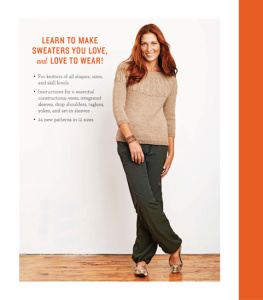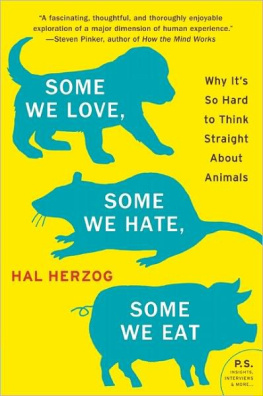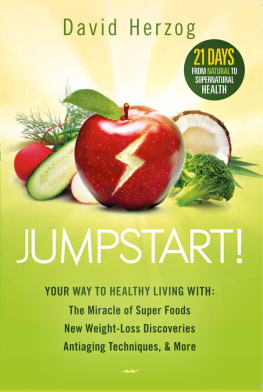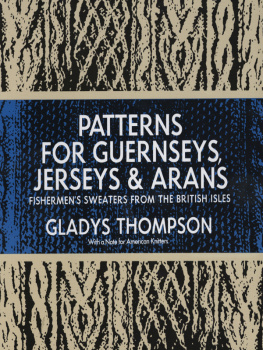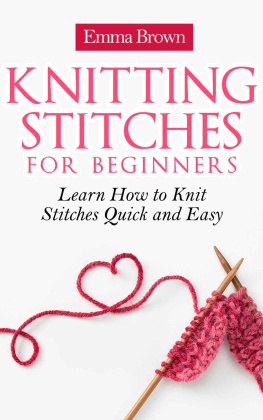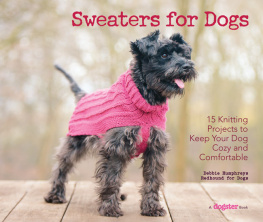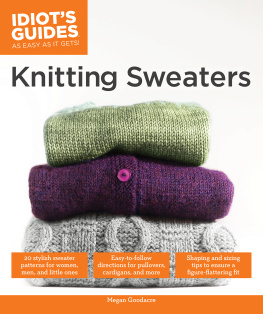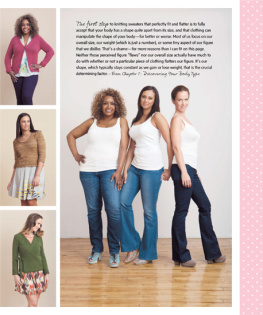


CONTENTS
CHAPTER 1
BEFORE the KNITTING
CHAPTER 2
DURING the KNITTING
CHAPTER 3
AFTER the KNITTING

CHAPTER 4
VESTS
CHAPTER 5
INTEGRATED SLEEVES
CHAPTER 6
DROP SHOULDERS
CHAPTER 7
RAGLANS
CHAPTER 8
YOKES
CHAPTER 9
SET-IN SLEEVES

Introduction

Of all of the things a hand-knitter can make, sweaters seem to be the most intimidating. In the years since my first book, Knit to Flatter, was published, Ive met countless knitters who can create heirloom lace shawls with 7 charts and complicated constructions without thought... but then look decidedly nervous when I suggest they try to make a simple Stockinette vest.

Why is this so? Clearly, its not knitting skillin fact, sweaters are some of the most simple projects around, skill-wise. All you really need to successfully knit a sweater is to keep a consistent gauge and know some basic increases and decreases. (Translation: If youve made a scarf that looks rectangular and has some stitch patterning, then youre ready for sweaters.)
What, then, is so frightening? I think most of the nervousness centers around two core issues:
Sweaters need to fit, and we have plenty of store-bought garments that were stacking the fit of our hand-knits up against. So its easier to tell when weve failed!
Sweaters are a big investment in both time and materials, and its often difficult to tell whether things are working until the very end of the process. This makes for stressful and worry-filled knittingthe opposite of why most of us have taken up this hobby!
The resources out there for prospective sweater knitters dont really help combat this intimidation. Theres perilously little simple guidance aimed at demystifying the sweater, and lots of anecdotal evidence that sweaters are difficult (such as pictures of disappointing garments online). So much information is out there, in fact, that its tough for a novice sweater knitter to distinguish whats really important (like considering the fabric youre creating) from the details that honestly dont make or break a sweater (like knowing exactly what kind of shaping to use where).
Im here to help.
My previous books have demystified fit in the most precise of all hand-knit sweaters: the set-in-sleeve sweater with waist shaping. My clear-cut, you-can-do-it approach has helped thousands of knitters to make tailored, fitted garments they love to wear. If youre reading these words, and have worked with me to get a sweater you love, thank you. Now, You Can Knit That stretches beyond the tailored, fitted sweater and helps you create hand-knitted sweaters of other, more fit-forgiving types, that you will adore just as much.
For those of you who looked at my first two books and felt intimidated: dont despair! The book you have in your hands will get you started on successful sweater knitting in the easiest, most gentle way possiblewith sweaters that are more forgiving in terms of fit, and honest, up-front advice about what needs to be considered (and what doesnt).
My goal in this book remains the same as in everything that I do: I want to help you create garments with your hands that you reach for day in and day out, because theyre comfortable and look great.
).
Most of the sweaters in this book are lower-stakes, fit-wise, than the classic tailored pullovertheyre a little looser, a little less glued to your shoulders, a little more relaxed. This means you can approach them with lower stakes and worry less while youre knitting them than some other sweaters youve seen.
Ive organized the book so that you can either work through it cover-to-cover, or skip around as garments call to you.
, I give you practical advice on the most important concepts in sweater knitting (and let you know whats safe to ignore in most patterns), from the swatching stage to the finishing stage. Short exercises let you nail the core techniques in a low-stress, low-stakes way by encouraging you to minify and practice on swatches.
, I give you advice and sweater patterns grouped by the way their pieces come together, a.k.a. their construction styles. Are they worked all in one? With raglan shaping? A gorgeous yoke? Each chapter presents you with a set of garments that reflects the most wearable, fantastic aspects of that construction.
Further, each chapter includes a small mini project that lets you produce a successful sweater with all the relevant techniques from that section, but on a smaller scale. Sweaters for kids arent nearly as intimidating as sweaters for adults, so each chapter starts with a more approachable pattern sized from 1 to 10 years. These will help you to learn on more manageable garments, and build up your confidence in how a particular sweater comes together before starting one for yourself or a full-sized loved one.
Its my hope that youll look through these pages and find a sweater (or five) that resonates with you, one that youve seen in the store and know you could improve upon if you made it yourself. Further, I hope that my guidance gives you the skills and confidence you need to actually cast on. Because truly, theres no feeling like wearing a stunning sweater youve made with your own two hands.
Its easier than you thinkI cant wait to see yours.
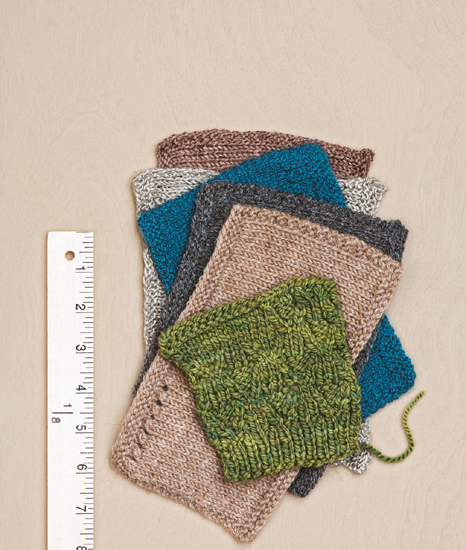
CHAPTER
BEFORE the KNITTING

Got a sweater youre dying to make? Awesome! You can knit that. But before you pick up the needles and go, there are some simple things you can do to set yourself up for success.

The Swatch
Bring up swatching in any group of knitters and youll probably get a variety of opinions, including several groans. But swatching doesnt have to be an unpleasant chore!
For many knitters, the cycle of swatch unhappiness goes like this: First, we start by thinking of swatching as a checkbox to mark off before we get to the
Next page
